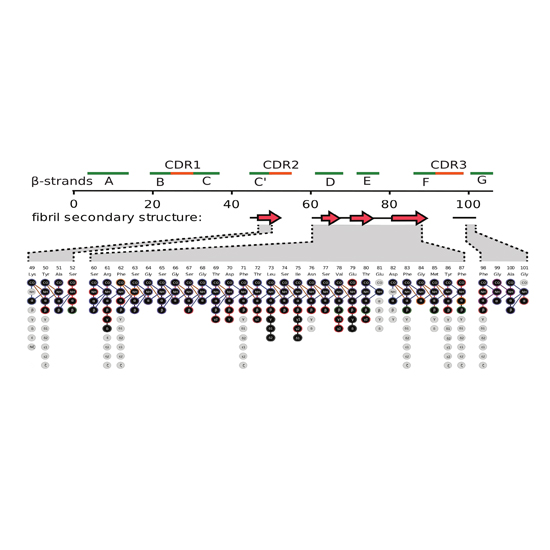MAK33 antibody light chain amyloid fibrils are similar to oligomeric precursors
26-Jul-2017
PLoS ONE, 12(7): e0181799, https://doi.org/10.1371/journal.pone.0181799
PLoS ONE, online article
Little structural information is available so far on amyloid fibrils consisting of immunoglobulin light chains. It is not understood which features of the primary sequence of the protein result in fibril formation. We report here MAS solid-state NMR studies to identify the structured core of κ-type variable domain light chain fibrils. The core contains residues of the CDR2 and the β-strands D, E, F and G of the native immunoglobulin fold. The assigned core region of the fibril is distinct in comparison to the core identified in a previous solid-state NMR study on AL-09 by Piehl at. al, suggesting that VL fibrils can adopt different topologies. In addition, we investigated a soluble oligomeric intermediate state, previously termed the alternatively folded state (AFS), using NMR and FTIR spectroscopy. The NMR oligomer spectra display a high degree of similarity when compared to the fibril spectra, indicating a high structural similarity of the two aggregation states. Based on comparison to the native state NMR chemical shifts, we suggest that fibril formation via domain-swapping seems unlikely. Moreover, we used our results to test the quality of different amyloid prediction algorithms.











